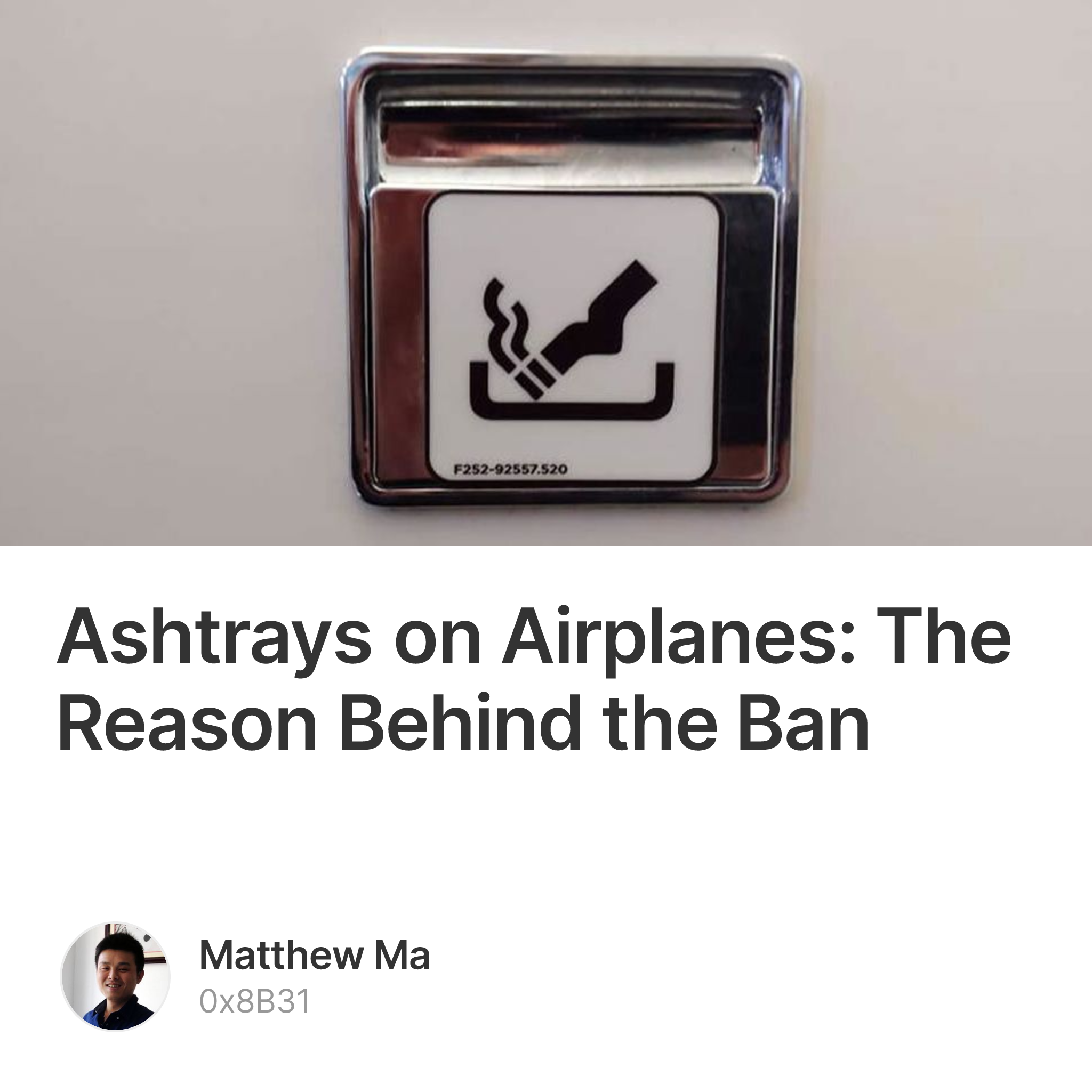For many years, smoking was a common practice on commercial flights, with airlines providing designated areas for passengers to light up. However, this changed in the early 1990s when smoking was banned on airplanes. The UK played a significant role in this transition, with Scottish carrier Loganair banning smoking as early as 1980, and British Airways implementing a full ban in 1998. Despite the ban, ashtrays remain a standard feature on board.
The Legal Requirement for Ashtrays
Despite the smoking ban, the Civil Aviation Authority (CAA) in the UK and the Federal Aviation Administration (FAA) in the USA require all airplanes to have ashtrays in lavatories. This regulation is in place to provide a safe place for passengers who choose to ignore the ban to extinguish their cigarettes, thereby reducing the risk of in-flight fires.
The presence of ashtrays is a safety measure rooted in tragic history. In 1973, a flight from Rio De Janeiro to Paris had to make an emergency landing due to a cabin fire, resulting in 123 deaths. Investigators found that a cigarette extinguished in a toilet waste bin could have been the cause. This incident, along with others, led to the requirement for ashtrays as a means to prevent similar disasters.
The FAA's Stance on In-Flight Smoking
The FAA maintains that ashtrays must be present on bathroom doors of all airliners to provide a convenient disposal location for cigarettes. This ensures that passengers who do not adhere to the "no smoking" policy have a place to dispose of their materials, preventing them from depositing lit materials in lavatory receptacles, which could lead to fires.
The fines for smoking or vaping on an aircraft are severe, with penalties up to £5,000 and potential criminal charges. The FAA keeps records of "unruly passengers," including those who smoke on board, and can propose civil penalties up to $37,000 per violation. These measures underscore the seriousness with which the ban is taken.
Even though smoking is universally banned on aircraft globally, ashtrays remain as a precaution. The FAA requires them as "minimum equipment," and a plane must replace a non-functional ashtray within three days. This requirement is based on the understanding that some passengers may still attempt to smoke, and having an ashtray available reduces the risk of a dangerous fire.
The Impact on Air Safety and Airline Protocol
The presence of ashtrays is a reminder of the potential dangers of smoking on board. Airline crew members, many of whom have experience dealing with fires, understand that a fire on board is one of the most frightening events that can occur. The ashtray serves as a safety net, ensuring that if a passenger decides to smoke, they have a safe place to extinguish their cigarette.
The Future of Ashtrays on Airplanes
Given the continued need for safety precautions, it is likely that ashtrays will remain a feature on airplanes. While they may seem like a relic of the past, they serve a crucial role in maintaining air safety and adhering to regulatory requirements.

